| s/y Nine of Cups Jewel Cave National Monument & Wind Cave National Park - South Dakota June 2012 |
| More National Parks and Monuments? American Odyssey - Part I? (Las Vegas to Denver) American Odyssey - Part II? (Denver to Boston) Roadside Americana? Birds of North America? Wildflowers of North America? |
| At more than 160 miles in length, Jewel Cave is currently the second longest cave in the world. Airflow indicates there is a lot of cave yet to be discovered. |
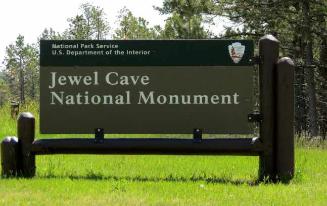
| The “jewels” of Jewel Cave are calcite spar crystals and have little commercial value. |
The earliest written account of Jewel Cave is a mining claim filed by Frank and Albert Michaud in 1900. The brothers described
the entrance as a hole that was too small for human entry, with a blast of cold air coming out. After subsequent enlargement with
dynamite, they entered the cave and discovered crawlways and low-ceilinged rooms coated with beautiful calcite crystals that
sparkled like "jewels" in their lantern light. The Michauds filed the "Jewel Tunnel Lode" mining claim in Custer on October 31,
1900. Although calcite crystals had little commercial value, it is apparent that they intended to develop this natural wonder into a
tourist attraction.
Lack of visitors, primarily due to slowness and difficulty of travel, rendered the mine unsuccessful as a tourist attraction at the
time. A local movement to set Jewel Cave aside for preservation culminated in the proclamation of the cave as a National
Monument by President Theodore Roosevelt in 1908. The Michaud brothers eventually moved away and their family sold the
claim to the government for about $750.
the entrance as a hole that was too small for human entry, with a blast of cold air coming out. After subsequent enlargement with
dynamite, they entered the cave and discovered crawlways and low-ceilinged rooms coated with beautiful calcite crystals that
sparkled like "jewels" in their lantern light. The Michauds filed the "Jewel Tunnel Lode" mining claim in Custer on October 31,
1900. Although calcite crystals had little commercial value, it is apparent that they intended to develop this natural wonder into a
tourist attraction.
Lack of visitors, primarily due to slowness and difficulty of travel, rendered the mine unsuccessful as a tourist attraction at the
time. A local movement to set Jewel Cave aside for preservation culminated in the proclamation of the cave as a National
Monument by President Theodore Roosevelt in 1908. The Michaud brothers eventually moved away and their family sold the
claim to the government for about $750.
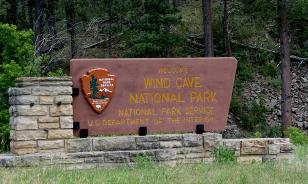
| Jewel Cave is not just an underground experience. The 1279 acre park is located in a Ponderosa pine forest and documents 120 species of birds and 393 plant species within its environs. |
| Several ranger-led underground tours are available at the park. We opted for the Scenic Tour, a 1/2 mile, 1+ hour loop that climbs up and down over 700 stairs along a dimly lit path. Our group of 20 descended down steep stairs to discover the wonders below. Cave popcorn, the "jewels" and drapery that looked like calcified jellyfish caught our attention. |
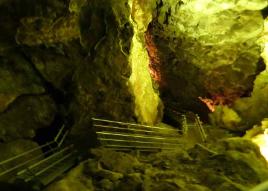
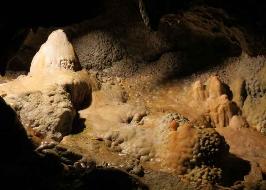
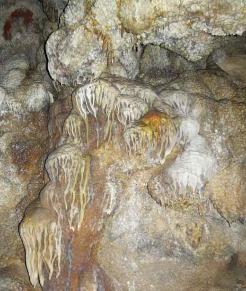
| Wind Cave National Park is not far from Jewel Cave National Monument although we were told the cave systems were not connected. Hidden beneath the rolling prairie of the southern Black Hills, Wind Cave is one of the world’s longest caves... the world's 5th longest cave to be exact. A labyrinth of rooms, crawlways and passages, Wind Cave became a national park in 1903 and is the nation's 7th oldest national park. |
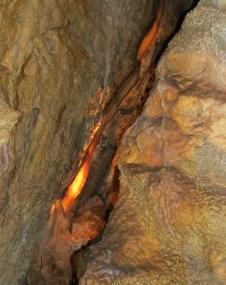
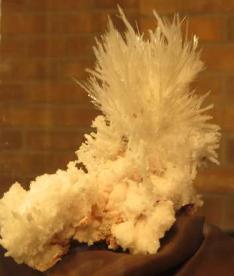
| Long, thin ribbons of mineral deposits known as cave bacon |
| Frostwork |
| Marcie is not much of a spelunker or caver. In fact, she's a bit distressed in close situations...like tight places several hundred feet underground. Suffice it to say, a guided tour worked well for us and she was relieved when we climbed the final steps back to sunlight and the great outdoors. |
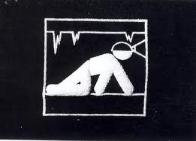
| Once again, we signed up for a ranger-led guided tour. This time we chose "The Natural Entrance Tour" which lasted about 1-1/2 hours and required negotiating about 450 steps. The brochure called it moderately strenuous, but it was pretty easy. Though we saw the "natural entrance", we entered via stairs and an elevator. |
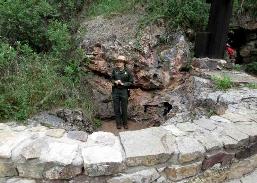
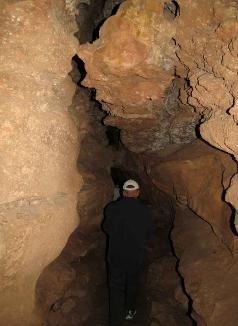
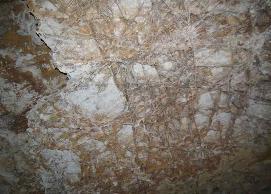
| Wind Cave is known for its "boxwork", an uncommon type of calcite mineral structure formed by erosion rather than accretion. |
| We found the pathway pretty skinny at times. |
| We'd been spoiled at other national parks that we'd visited earlier in the season. These parks were crowded as were the tours. 20-40 people in close ranks traipsing up and down stairs, trying to hear what the tour guide was saying while trying to appreciate our surroundings was not conducive to enjoying the caves. |
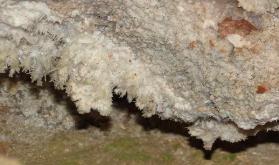
| Wind Cave frostwork |
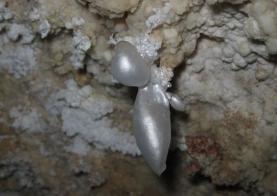
| Hydromagnesite balloons are rare and found in few caves throughout the world. We didn't actually see any, just heard about them. Photo nicked from NPS files. |
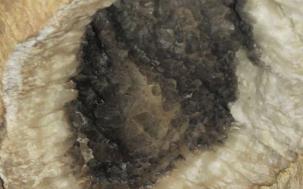
| Wind Cave was named for barometric winds at its entrance, very noticeable as pressure inside the cave attempts to maintain equilibrium with the air outside. |